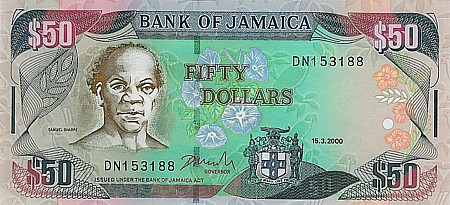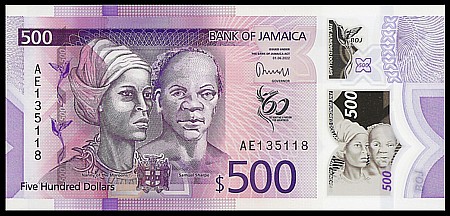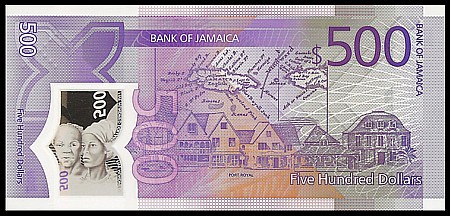JAMAICA
The Rt. Honourable Samuel Sharpe

Samuel Sharpe was born in Jamaica about 1801 to 1805 to a slave parent, He had one younger brother and an older sister. Showing the aptitude, he was allowed to become educated, a privilege that raised him in the status of his fellow slaves as well as their owners. Using his education, Samuel Sharpe became a Baptist preacher, eventually becoming a deacon in the Burchell Baptist Church in Montego Bay. In this position, Samuel Sharpe travelled throughout Jamaica preaching his fellow slaves about Christ and His message.
As an educated slave who was also a travelling Baptist Preacher, Samuel Sharpe was able to get a lot of information from other slaves and the ministers of the churches. He followed the news concerning the British Parliament and their movement toward emancipation. In those days news travelled slowly, making its way over the waves if at all and, like today, news was often not exactly as true or complete as we would hope. It was in that element that Samuel Sharpe heard that the Parliament had already granted freedom to all the slaves in the British Empire. Incensed at the slow adoption of the law in Jamaica, Samuel Sharpe used his position to coordinate a protest throughout several plantations in Jamaica, disrupting a sugar cane harvest.
What was supposed to be a peaceful protest in December 1831, soon got out of hand and led to the largest uprising in Jamaica. Upwards of 60,000 slaves took part in the uprising which lasted for 10 days. Known as the Christmas Rebellion, some slaves set the Kensington Estate on fire, and burned the sugar cane crop, which was waiting to be harvested. The local government mobilized a contingent of soldiers and native Maroons to quell the unrest, resulting in the deaths of over 200 slaves and 14 white plantation owners. Some smaller uprisings cropped up in the weeks afterwards, but they were quickly subdued. In 1832 the Jamaican government’s investigation tried Samuel Sharpe and found him and many others guilty and sentenced them to execution by hanging on May 23, 1832 in the marketplace at Montego Bay. Samuel Sharpe’s body has been interred in the grounds of the Burchell Baptist Church.
For all his efforts, Samuel Sharpe may have found only the hangman’s noose, but it did have an effect on the British Parliament who held additional inquiries into the rebellion and unnecessary deaths as a result of the effects of slavery. The following year the Slavery Abolition Act was passed in the British Parliament, ending slavery in Britain and bringing an end to slavery throughout the empire by 1838.
In 1975 the Jamaican Government honored Samuel Sharpe a National Hero, giving him the posthumous title of the Right Excellent Samuel Sharpe. His portrait has been prominent on the $50 and $500 Dollar banknotes.
This 500 Dollar bill is from Jamaica’s first foray into Polymer banknotes, and incorporates a host of new security features, the most obvious of course being the clear window prominent in all polymer notes issued so far. On the front of this note is Nanny of the Maroons and Samuel Sharpe, both slaves who rebelled against the British and helped to usher in abolition for Jamaican slaves and help the British embark on an anti-slave trade campaign, which would eventually grow to have global implications benefiting all enslaved humans from their bondage.



